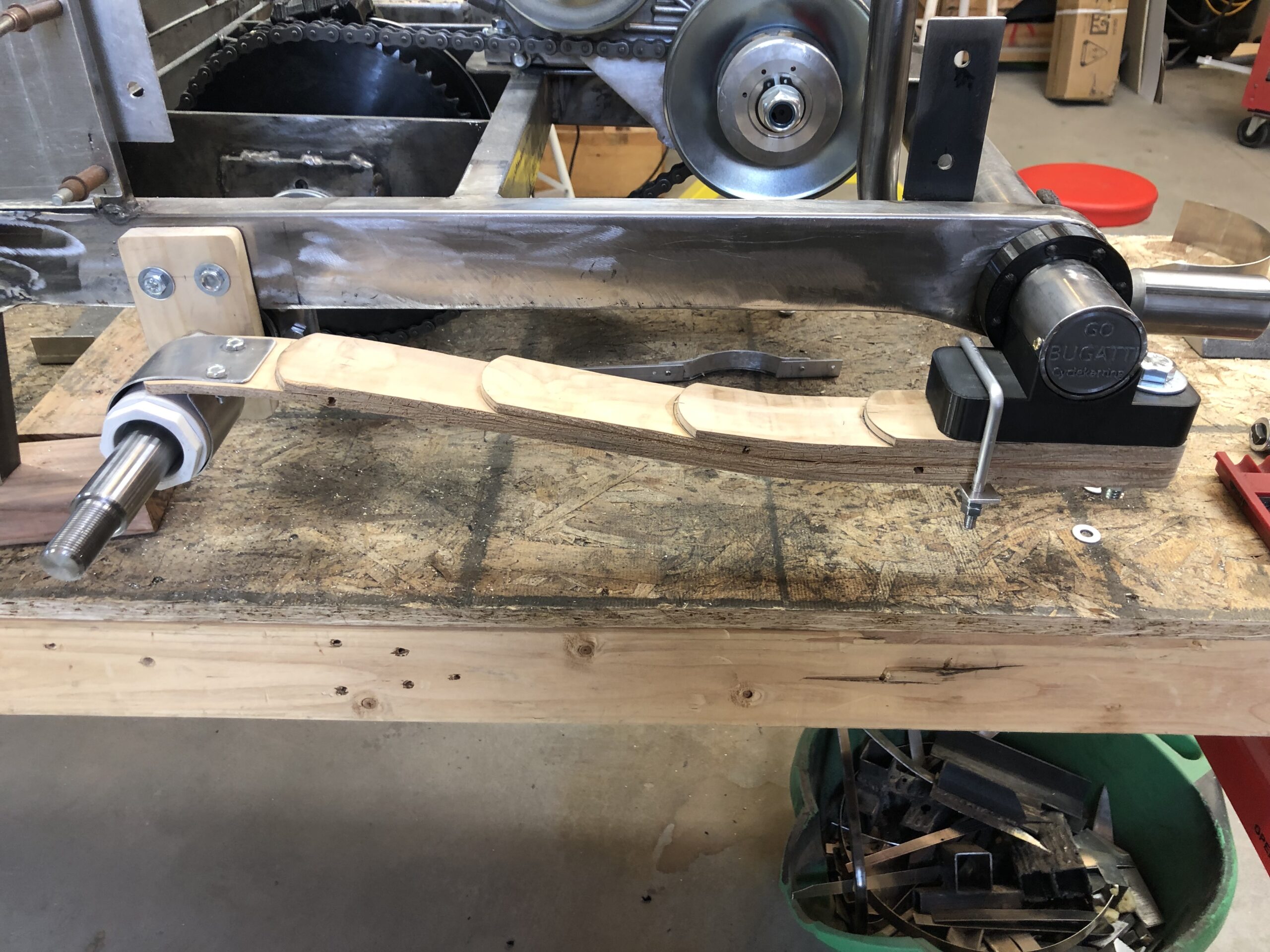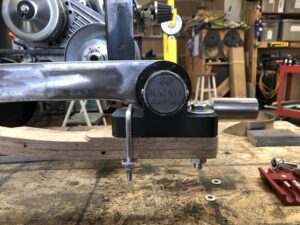

Type 13 - Rear Elliptical Springs
One of the early innovative inventions from the brilliant mind of Ettore Bugatti was the rear 1/4 elliptical springs that he also patented. He initially designed and used it on his Type (Model) 10 but it became an integral part of many of his race cars including the well known Type 13. So clearly, no Bugatti Type 13 cyclekart would be complete without including this important contribution to racing. To leave them out would be an insult despite the fact that my cyclekart rear axle was solidly mounted to the frame and afforded no movement what-so-ever.
Nevertheless, I was determined to somehow include them on my cyclekart. It took quite a bit of internet photo and video browsing in an attempt to fully understand the design. After all I could do, I still did not fully understand how this was done so I requested the assistance of the Bugatti Trust in England. They kindly responded with a copy of Bugatti’s patent and a few detailed pictures. These people are so nice! This is not the first time I have interacted with them and they have been so supportive of me.
One of my goals was to keep the weight as low as possible, so I used 1/4″ plywood in lieu of the steel leaf springs. I glued the fake wood leaf springs together then soaked them in hot water for several hours. Once out of the water, I clamped them to a 2×6 I had shaped to provide the right curve fit and let it dry over night. It helped that we had just remodeled our home and added a gas fireplace which worked out very nicely for drying out the wood.
The rear attachment to the torsion bar was initially through a very heavy steel weldment. I replicated it very nicely with 3D printed parts. Each set took about a day and a half to print. Rather than fully replicating the stamp used by Bugatti at the end of the 2 inch pipe I put my own imprint for GoBugatti and cyclekarting. I also made the U-shaped bolt from 1/4″ aluminum rod that I bent and threaded.
The attachment to the actual rear axle was accomplished using two inch PVC pipe fittings that are attached to a wood mount that gets bolted to the chassis frame. This gives the axle plenty of clearance while still providing good support for the leaf springs. While not 100% true to its original design, it’s what we do in cyclekarting to characterize what the designer created.
Once this assembly is painted black along with the rest of the chassis, it should look pretty real. I could not fully replicate the original design as the cyclekart wheel height relative to the torsion bar are very different, but I am satisfied with the end product.
